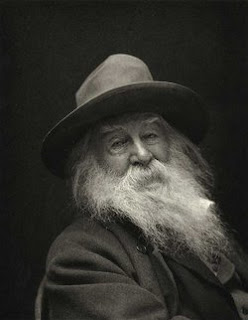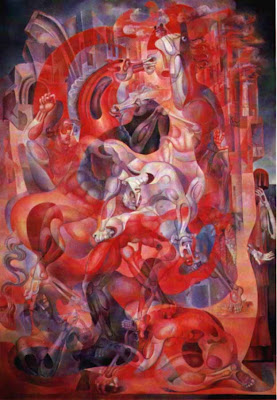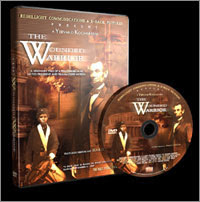
by Yervand Kochar
Being the first modern war, the American Civil War was, in a sense, the last romantic one. In spite of having highly distinct political and economic motivations, the war was essentially about something different.
It was about a lifestyle changing, a whole Southern micro-civilization transforming. As a result, a spring of slavery which was moving the Southern mechanism popped out of the system. Emotions suppressed, expressions silenced flowed out of the plantation soil and the sound accompanying liberation was that of the first uniquely American music- the Negro spiritual.
“Spirituals were created over a 200-year period, but not until after the Civil War were most Americans aware of their existence”. Yet, the process of white acquaintance with the Negro spirituals and plantation music had begun prior to the war when “a group of Northern composers traveled throughout the South observing and notating song ideas from plantation slaves” (This quote and most of the factual data of this article is derived from Tom Faigin research). Slaves fused the songs and dances learnt from traveling Irish musicians with more rhythmic African musical techniques and played jigs and reels on homemade fiddles and banjos (a slave invention itself). This in turn was modified by the above mentioned composers into “a show that consisted of snappy songs, dances and comedy sketches, mostly imitating the plantation Negro life”. The show became known as a minstrel show and gained a sensational popularity in the North.
 Among the composers was Dan Emmett who in 1859 wrote “Dixie”. Although he was Northern, “Dixie” became a hit in the South and became the Southern anthem during the war. Emmett’s group was banned from performing in the Northern cities by abolitionists. Curiously enough, at the victory celebrations in Washington, President Lincoln required to play nothing else but “Dixie” claiming that it was one of the best songs ever composed.
Among the composers was Dan Emmett who in 1859 wrote “Dixie”. Although he was Northern, “Dixie” became a hit in the South and became the Southern anthem during the war. Emmett’s group was banned from performing in the Northern cities by abolitionists. Curiously enough, at the victory celebrations in Washington, President Lincoln required to play nothing else but “Dixie” claiming that it was one of the best songs ever composed.
“Dixie”s story was not exceptional. Many songs were equally popular in the North and the South. Both sides were making parodies of each other’s patriotic songs by distorting lyrics, yet, maintaining a melody. And this, indeed, was indicative of the essence of the Civil War. The South and the North were singing the same song. They disagreed on lyrics but the melody of the war was one. It was the music of Freedom (however it was interpreted); the music of a human soul fighting for its liberation, the souls of the oppressors and oppressed, winners and losers, the soul of the nation singing.
The Civil War broke the lock to the treasury of the American musical culture. Because of the war and its outcome the process of integration of various musical traditions was fostered. Native black folk music blended with European music, African religious music blended with the white Protestant culture accompanied with the drum beat of war time ballads that protested injustice and promoted war effort. “Approximately 10,000 songs have been taken from folksong collections and regimental histories. The stage was now set for future American musical innovation”.
The prisoners’ songs, the songs of soldiers longing for their homes and their beloved along with the slave songs of toil and suffering became the cornerstones of a new, distinctively American music known as the blues.
The liberated African pentatonic (five tone) scale became the essence of jazz and carried the anger of oppression and the suffering of the war all the way to its explosion in rock.
The Civil War blended the people who inhabited this country into one coin and the tinkling of the coin had its own distinct sound. That sound was improvisational by necessity, since every group joined in with its unique instrument. It was hardly believable that the band of such diversity would be ever able to play in harmony. And many refused to believe. Yet, the band played because it was not afraid of mistakes. It found a musical expression of the American Idea- there are no mistakes in improvisation.
It took a war to understand.
The slaves were unaware of their singing most of the time. The perpetual suffering made a song their only accessible medicine. The white soldiers, (who were ridiculing that strange slave habit), faced with the horrors of war caught themselves on singing unconsciously and spontaneously. The war made people sing. It also made them write. A tremendous amount of letters, diaries and poems, a whole universe of words carrying experiences of pain and sorrow linked soldiers to their families. Privates, officers, their wives and parents separated by the war began to communicate through the written word.
The war made people sing. It also made them write. A tremendous amount of letters, diaries and poems, a whole universe of words carrying experiences of pain and sorrow linked soldiers to their families. Privates, officers, their wives and parents separated by the war began to communicate through the written word.
The sufferings of the body and the elevations of the spirit were transmutable only in the poetic form. It was a sincere poetry. It was an emotional account of events, outer or inner, experienced by real people.











